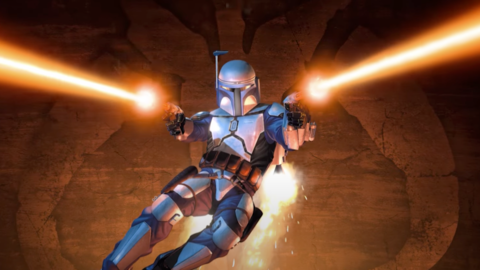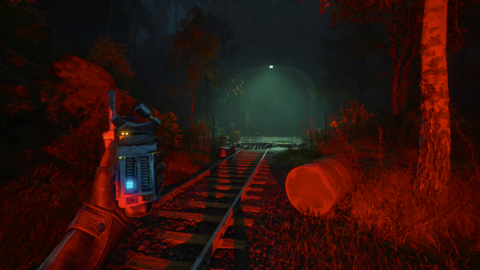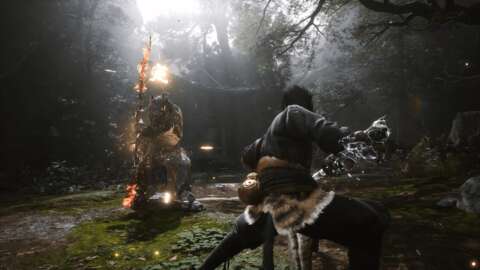As Sony continues to bring many of its acclaimed PlayStation console exclusives to PC, each release seems to be getting better in terms of quality and stability. Ghost of Tsushima is the latest to uphold this trend, with developer Nixxes showing yet again how valuable of a purchase it was in the pursuit of this PC-focused endeavor. Taking the work done by Sucker Punch on the PlayStation 4 and translating it to a smooth PC experience might sound trivial in the face of more demanding projects such as Returnal and Ratchet and Clank: Rift Apart, but it doesn’t make the final product any less impressive when you’re able to get it running far beyond even the PlayStation 5 version’s level of visuals and performance.
Ghost of Tsushima on PC is the complete package, including the post-launch multiplayer mode Legends (which requires a PSN account to play) and the entertaining Iki Island DLC that extends protagonist Jin Sakai’s adventure. There’s a lot to play here, especially taking into account the scope of the main adventure. It’s a story that takes some time to get going, but fully earns its pacing through moments such as the breath-taking late title card screen and captivating set-piece battles that bookend its main acts. Ghost of Tsushima’s open-world design feels slightly old given the time since its original release, but it’s no less captivating to make your way across the gorgeous island the game takes place on.
On PC, Tsushima looks better than ever, too. There are some small improvements that help its visuals surpass those of the PS5 version, including some upgrades to volumetric fog and smaller visual enhancements to make the world look sharper to the eye. It’s hard to pick these out without a direct comparison to the console version, however, with Nixxes holding back large changes such as ray-traced lighting or global illumination, which is disappointing given how both have become commonplace in modern games. Ghost of Tsushima side-steps its age with a timeless visual design. Colors are vibrant and accentuated, bringing to life forests laden with warm autumn hues and providing an eye-catching contrast between the lush wildlife and the oppressive Mongol structures that have started infecting it.
Exploring this world is improved significantly with the additional fluidity that playing on PC can offer. On my AMD Ryzen 5600X and RTX 3080 Ti, I was pleasantly surprised to see such high frame rates at much higher resolutions than the PS5 could offer, with a native 4K hovering well above 80fps for much of my playtime. This gives Ghost of Tsushima a lot of room for scaling down to much older hardware, albeit with the caveat that it plays best on graphics cards with more than 8GB of VRAM, which can be a limiting factor. Still, the range of visual settings on offer lets you refine your experience to achieve the performance you want, with real-time changes to the world letting you sample your tweaks as you make them in the menu. Ghost of Tsushima felt great on PS4, was vastly improved with its 60fps mode on PS5, but feels transformative at even higher refresh rates if you have the display to support it.
A wide range of hardware is also supported in terms of resolution scaling features, with support for Nvidia’s DLSS, AMD’s FSR, and Intel XeSS super-sampling solutions. In addition, you can make use of Sucker Punch’s own TAA solution with dynamic resolution scaling, which matches how the PlayStation handles the game, although it’s a much less refined option than those offered by PC graphics cards. More surprising still is the decoupling of AMD’s hardware agnostic frame generation solution, letting you pair it up with Nvidia’s DLSS for the first time (officially) in a PC title. This means that you don’t need a modern Nvidia 40-series card to enjoy the benefits of frame generation, which can nearly double your frame rate without much perceivable latency. There are some issues with image quality if you look hard enough, as the generated frames are injected between natively rendered ones, but they’re minor enough that I played with the setting enabled for most of my time. This won’t magically transform the game into a 60fps one if you are struggling to sustain that level of performance, however, as you’ll have the best results with the game running there or higher already.
Between its scalable performance and robust range of settings, Ghost of Tsushima is another feather in the cap of Nixxes’ work with PlayStation exclusives. Even if it’s without some big improvements over its console counterpart, it’s nonetheless a great way to experience one of the most visually striking open worlds on the market today despite its age, with the dangers and wonders of Tsushima island still a delight to experience for the first time.





